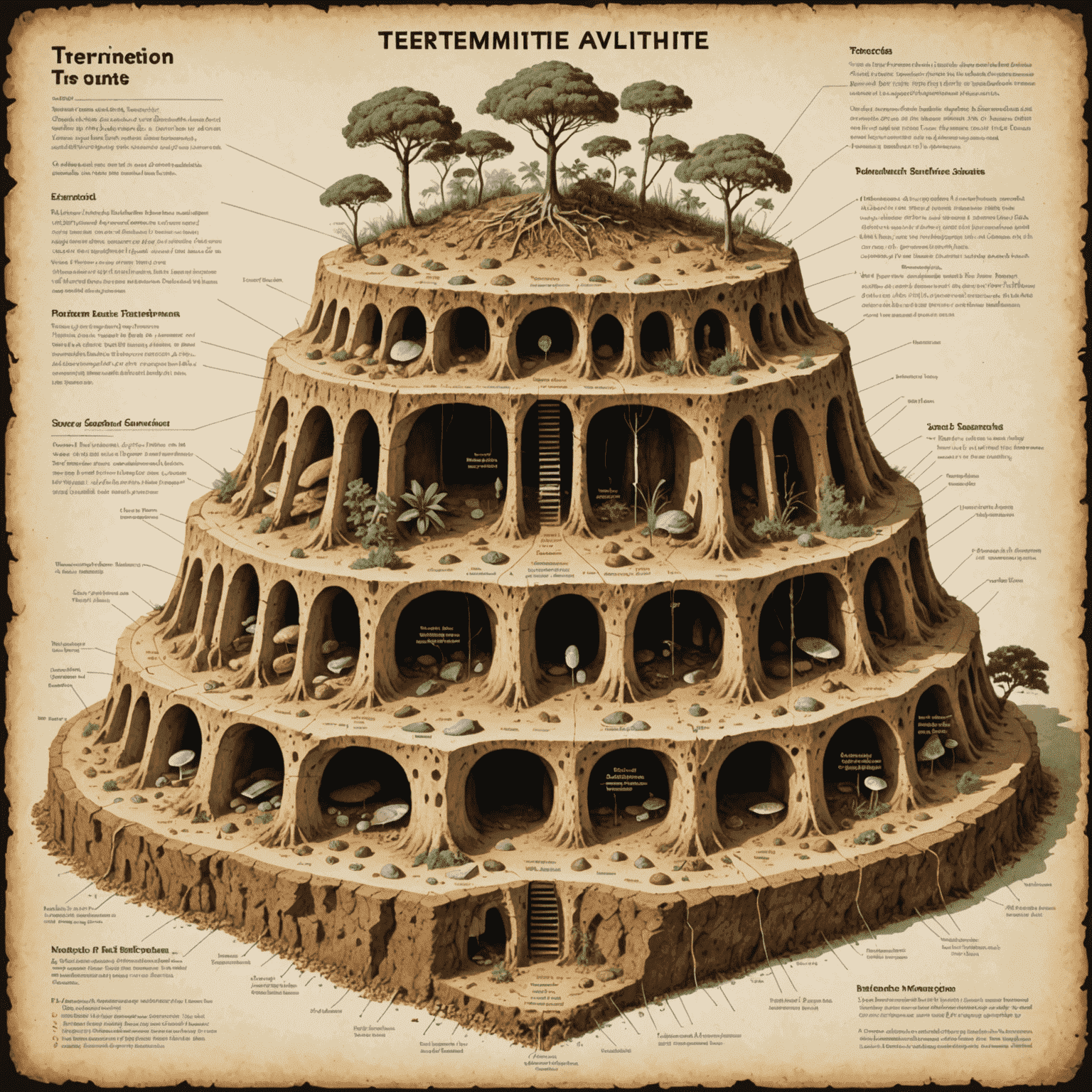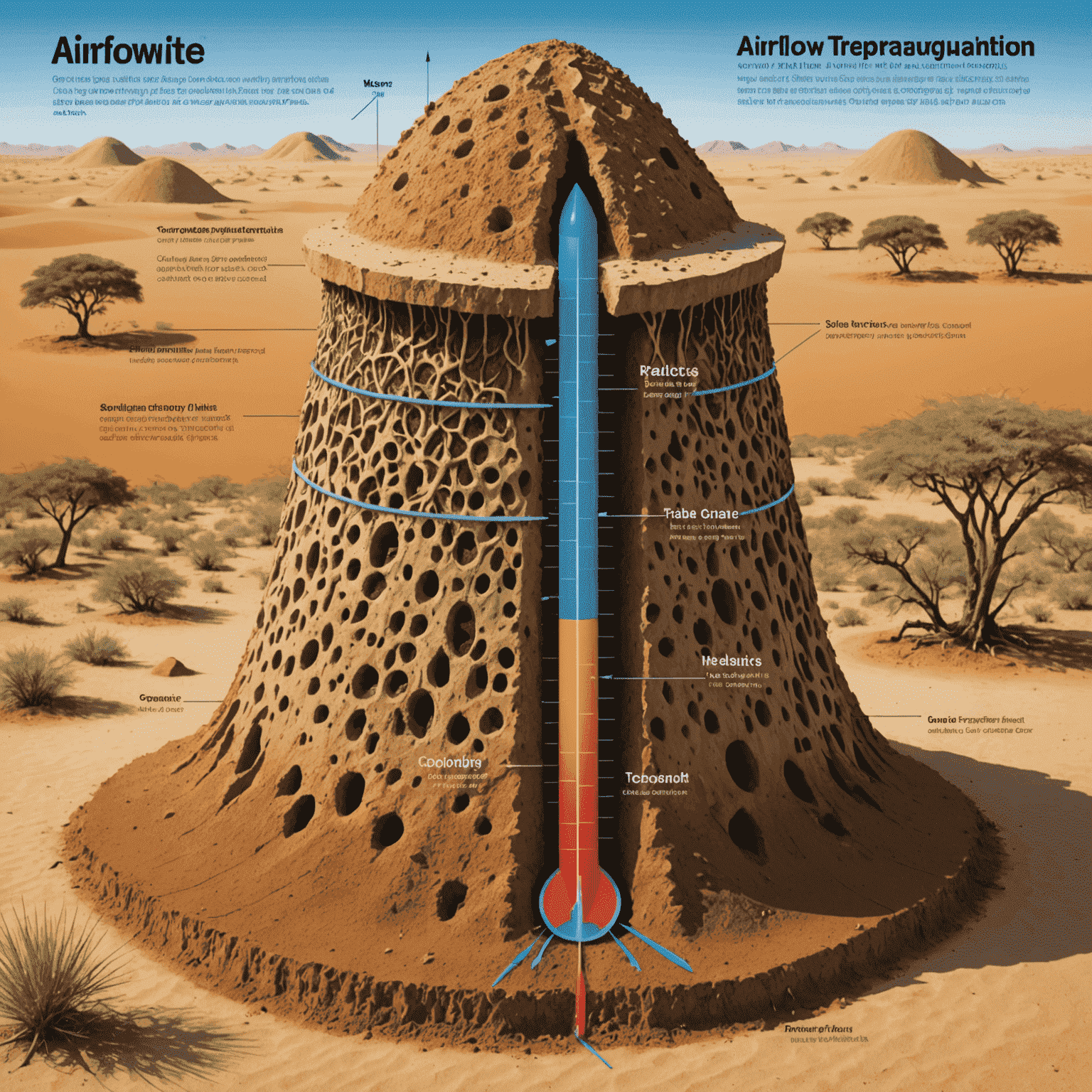Termite Mound Engineering: Nature's Skyscrapers

Deep in the heart of Africa's savannas and Australia's outback, termites are busy constructing some of nature's most impressive architectural marvels. These tiny insects, often overlooked, are master builders capable of creating structures that rival human engineering in complexity and efficiency.
The Magnificent Mound
Termite mounds are more than just piles of dirt; they are sophisticated structures that can reach heights of up to 30 feet (9 meters). These "insect skyscrapers" are a testament to the collective power of millions of tiny workers, each contributing to a grand design that has been perfected over millions of years of evolution.

Architectural Marvels
- Complex network of tunnels and chambers
- Specialized areas for different colony functions
- Thick outer walls for protection
- Intricate ventilation systems
Nature's Air Conditioning
Perhaps the most fascinating aspect of termite mounds is their sophisticated climate control system. These structures maintain a constant internal temperature of around 87°F (31°C), despite external temperatures that can fluctuate from near freezing at night to over 100°F (38°C) during the day.
"Termites have evolved an incredible passive cooling system that puts our air conditioning to shame. Their mounds are a testament to the power of biomimicry in sustainable design."
How It Works:
- Chimney Effect: The mound's structure creates a natural convection current, drawing cool air from underground chambers.
- Porous Walls: The walls of the mound allow for gas exchange, helping to regulate oxygen and carbon dioxide levels.
- Thermal Mass: The thick walls of the mound act as insulation, helping to maintain stable temperatures.
- Adaptive Design: Termites constantly modify their mounds, opening or closing vents as needed to adjust airflow.

Lessons for Human Architecture
The ingenuity of termite mound design hasn't gone unnoticed by human architects and engineers. Several buildings around the world have drawn inspiration from these natural wonders:
- The Eastgate Centre in Harare, Zimbabwe, uses termite-inspired ventilation principles.
- The Council House 2 building in Melbourne, Australia, incorporates similar passive cooling techniques.
- Researchers are studying termite mounds to develop more energy-efficient building materials and designs.
Did You Know?
Relative to their size, some termite mounds would be equivalent to human structures over a mile high!
Conclusion: Nature's Master Builders
Termite mounds stand as a powerful reminder of nature's ingenuity. These incredible structures, built by insects barely visible to the naked eye, demonstrate principles of sustainable architecture that we're only beginning to understand and implement. As we face challenges like climate change and resource scarcity, perhaps it's time we took a closer look at these tiny engineers and the lessons they have to offer.
The next time you see a termite mound, take a moment to appreciate the marvel of natural engineering before you. It's not just a pile of dirt – it's a testament to the power of collective effort and evolutionary design, a skyscraper of the insect world that puts our own efforts to shame.